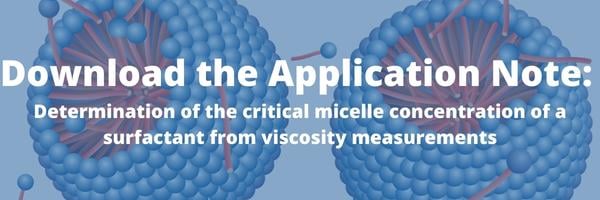Surfactants, or surface-active-agents, are amphiphilic chemicals that possess a hydrophilic (water-loving) head-group and a hydrophobic (water-avoiding) tail-group. As a result, these molecules are surface active and can adsorb to interfaces (e.g., water/air) and reduce the surface tension, allowing surfactants to act as detergents, wetting agents, emulsifiers, foaming agents, or dispersants. Because of their important role in the above mentioned list, surfactants have many practical applications, including detergents, soaps, paints, adhesives, cosmetics, personal care products, oilfield chemicals, pharmaceuticals, and food products.

Surfactants are primarily used to decrease surface and interfacial tension, and to stabilize the air interface. Surface tension is the tendency of liquid surfaces to shrink to the minimum surface area possible. Surface tension is an important factor for R&D teams when formulating and testing quality of products involving fluids.
We often relate liquids with high viscosity as having high surface tension as well, however this correlation is not accurate. Surface tension is caused by surface molecule forces and viscosity is related to internal friction of molecules, while there is no direct correlation between viscosity and surface tension, there is a existing relationship, and .both properties affect product quality (such as inkjet printing, paint rolling, detergent formulation, and drug development).
When the concentration of surfactant in a solution exceeds the critical micelle concentration (CMC), they combine together to form spherical structures called micelles. These micelles work to remove soils. "The hydrophobic tails are attracted to soils and surround them, while the hydrophilic heads pull the surrounded soils off the surface and into the cleaning solution. Then the micelles reform with the tails suspending the soil in the center of the structure." (IPC)
Shampoo products contain a combination of surfactants as the cleansing agents, as well as polymers and sodium chloride as rheological modifiers and are typically produced as a viscous liquid. Poloxamer 124 is a useful surfactant for the formulation of cosmetics and pharmaceuticals because it increases miscibility. Poloxamer 124 has also been used to control thickness (viscosity) of personal care products and dish soaps. (Fisher Scientific).
Surfactants are also important in oil frac'ing processes. Common types of fluids used in frac'ing are slickwater (FR water) and crosslinked gels, both fluids utilize surfactants to achieve a viscosity needed in the specific system.
Contact us to learn more about the various use cases for surfactants, or to discuss the importance of viscosity when formulating solutions involving different surfactants.
Written by: Eden Reid, RheoSense Senior Marketing and Sales Operations




